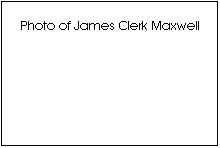|
|

|
|









What is light? Unless or until we make extremely careful observations, it seems clear that light travels in straight lines. We can hear a band around the corner of a building but we can not see it. Sound waves bend around obstacles but light does not. All of our surveying-or something as common as reaching for a doorknob-relies on the idea that light travels in straight lines.
Sir Isaac Newton described light as tiny particles which he called corpuscles. This particle nature of light is consistent with light traveling in straight lines. The reflection of light from a mirror, then, can be described like a tennis ball bouncing or reflecting from a wall. Newton went on to explain the bending or refraction of light as it goes from air into water or glass. To explain this bending of light, Newton required that the speed of light in water or glass was greater than the speed of light in air (this is incorrect but the experimental evidence was not available in Newton's time).
Christian Huygens, a contemporary of Newton's, thought that light was a wave. Huygens explained the propagation of light by saying that each point on a wavefront of light acted as a source for a new wavefront. With no experimental evidence to decide between the particle model of light or the wave theory of light, most scientists followed Newton's ideas and considered light a stream of particles. Remember that Newton was a very great and famous scientist.
However, in 1801, the British scientist Thomas Young reported experiments on the interference of light passing through a double slit which unequivocally proved light had to be a wave. We will get to the details of interference later but now we can simply say that waves interfere and particles do not.
Later in the nineteenth century, James Clerk Maxwell, the first
professor of experimental Physics at Cambridge University, developed
detailed equations about electricity and magnetism. These equations-now
known as Maxwell's equations-summarized and explained electricity
and magnetism as fundamentally as Newton's laws of motion had
summarized and explained motion two hundred years earlier. Maxwell's
Equations predicted an electromagnetic wave with a speed very
close to the measured speed of light. Of course, this was further
evidence of the wave nature of light. Later experiments confirmed
that light is, indeed, an electromagnetic wave.


In 1905 Albert Einstein explained details of the photoelectric effect and was later awarded the Nobel Prize for this work (not for his work on Relativity!). To explain the photoelectric effect, Einstein required that light be a collection of particles or lumps. We can call these lumps of light "photons" or "quanta". In this brief introduction to Optics, we are seeing the dual nature of light which we will pursue in greater depth in the section on Modern Physics or in Quantum Physics.
So, is light a stream of particles or is it a wave? For our initial introduction to Optics, it really does not matter. Light travels in straight lines. That would be true of particles and of waves. If we look very closely, as with Young's double slit experiment, we find that light does bend around corners and it does interfere. So it must be a wave. If we look very closely, as with the photoelectric effect, we find that light must come in individual, discrete lumps or photons or quanta. So it must be a particle.
Color is an important characteristic of the nature of light. Long
before the time of Sir Isaac Newton, it was well known that when
white light passes through a prism-just a piece of glass whose
sides are not parallel-a spectrum of colored light emerges as
in Figure 16.3. Many earlier observers had thought the colors
of the emerging spectrum were caused by the glass. Newton contended
that the colors were present in the initial white light. By placing
a second prism to intercept the colors that emerged from the first
prism, Newton recombined these colors to produce white light,
as sketched in Figure 16.6. White light is the presence of all
colors. We will talk more about color and color vision and color
mixing in the next chapter.


Q: Place a screen in front of the spectrum of colored light coming from a prism. Cut a slit in the screen and position it so that only red light passes through the slit. Now let that red light pass through another prism. What colors will you expect to see after this light has passed through the second prism?
A: All the colors of the spectrum were present in
the initial white light. The prism spread the different colors
out at different angles but did not create them. Only red light
goes into the second prism so only red light will come out of
the second prism.


|
|